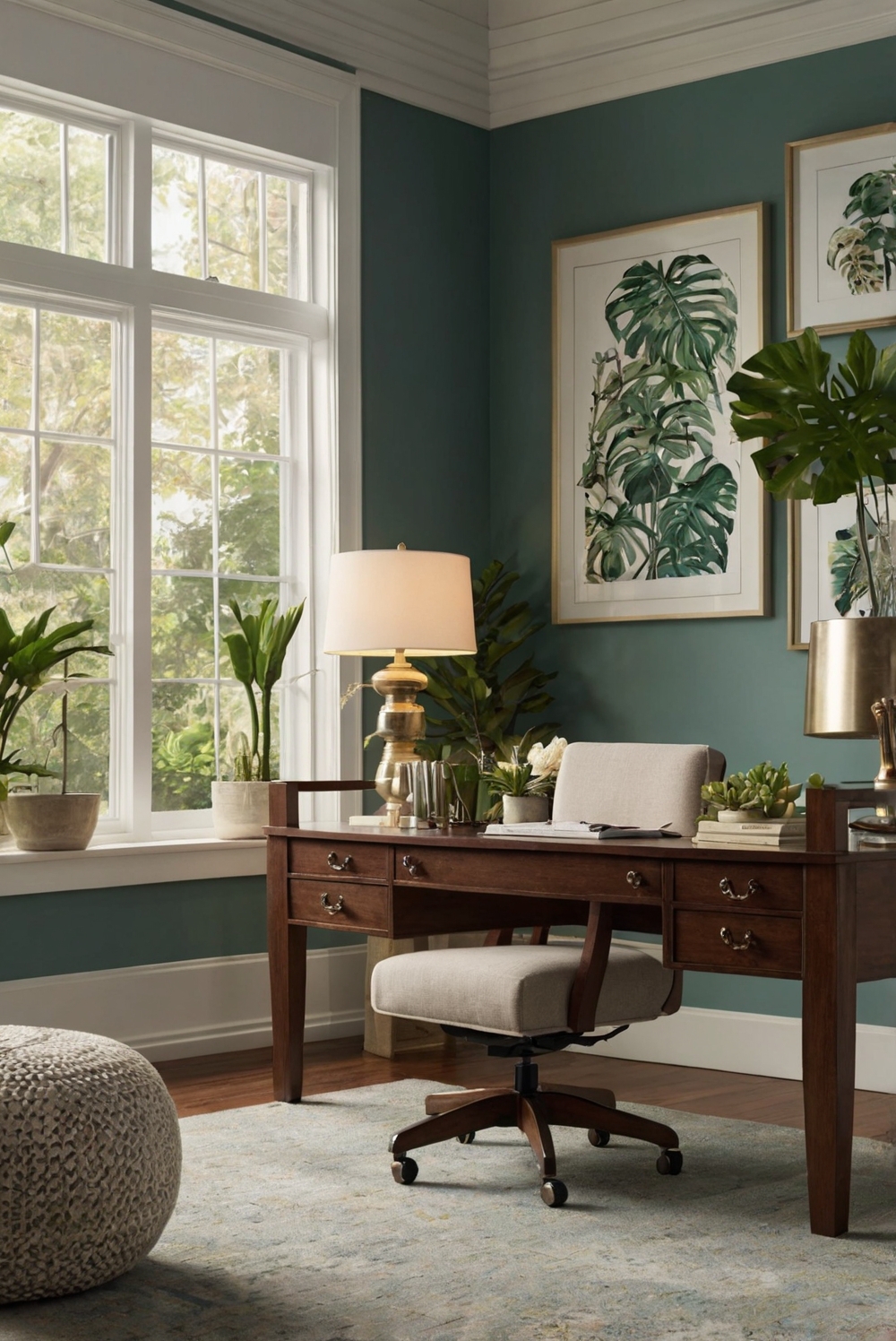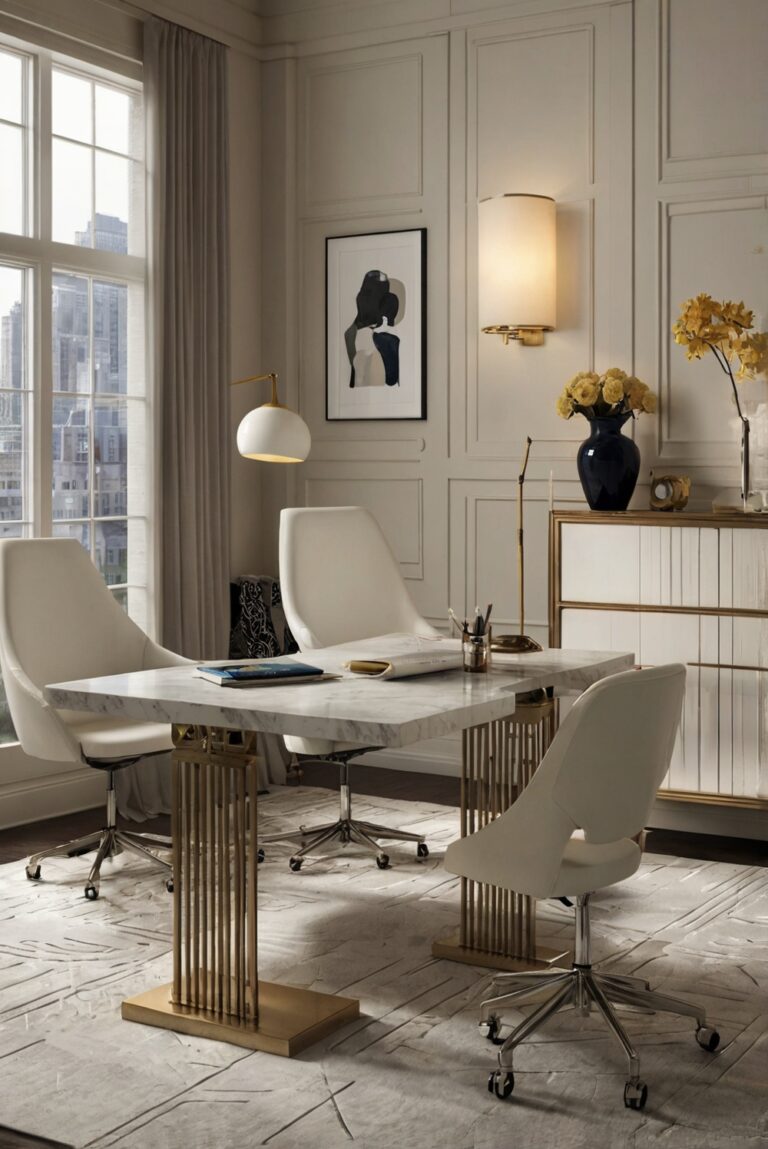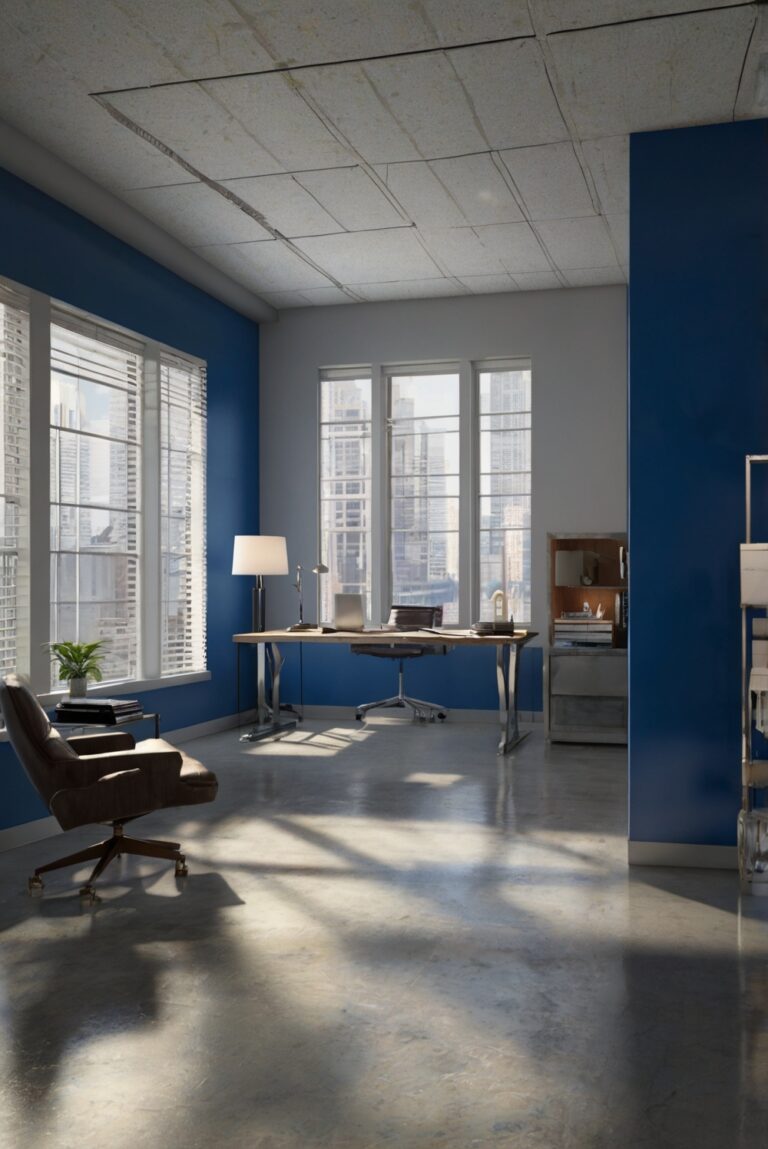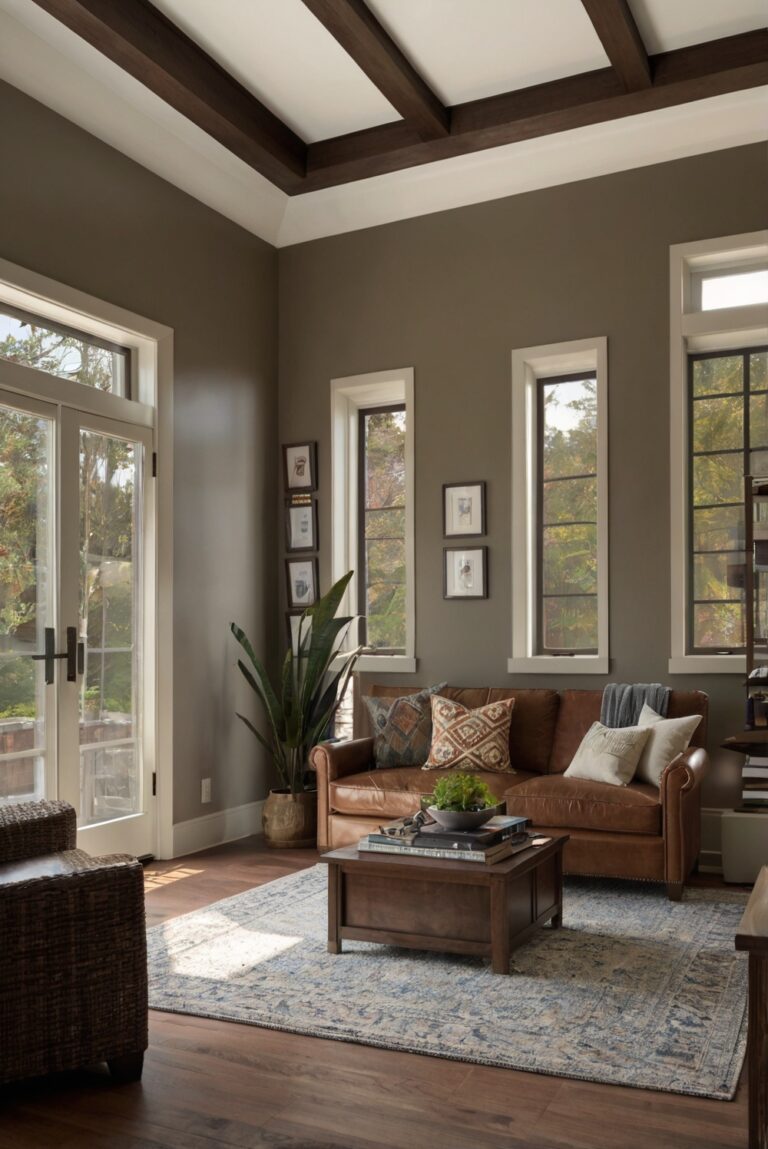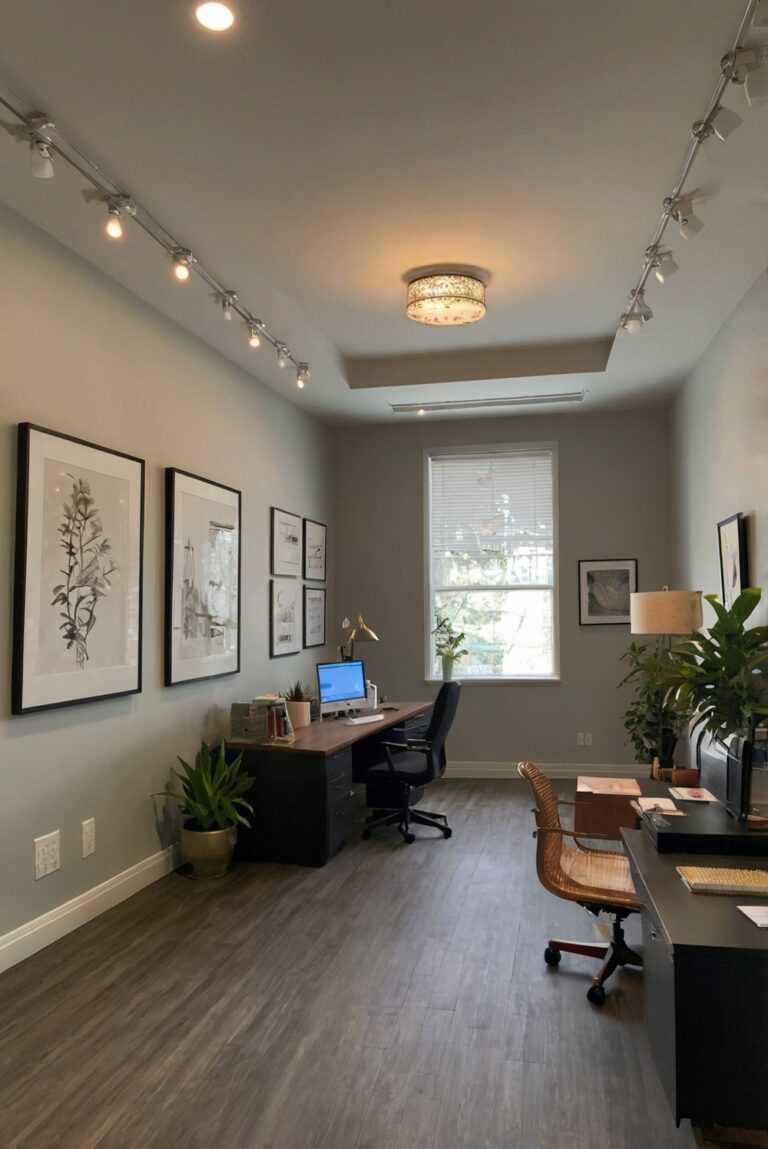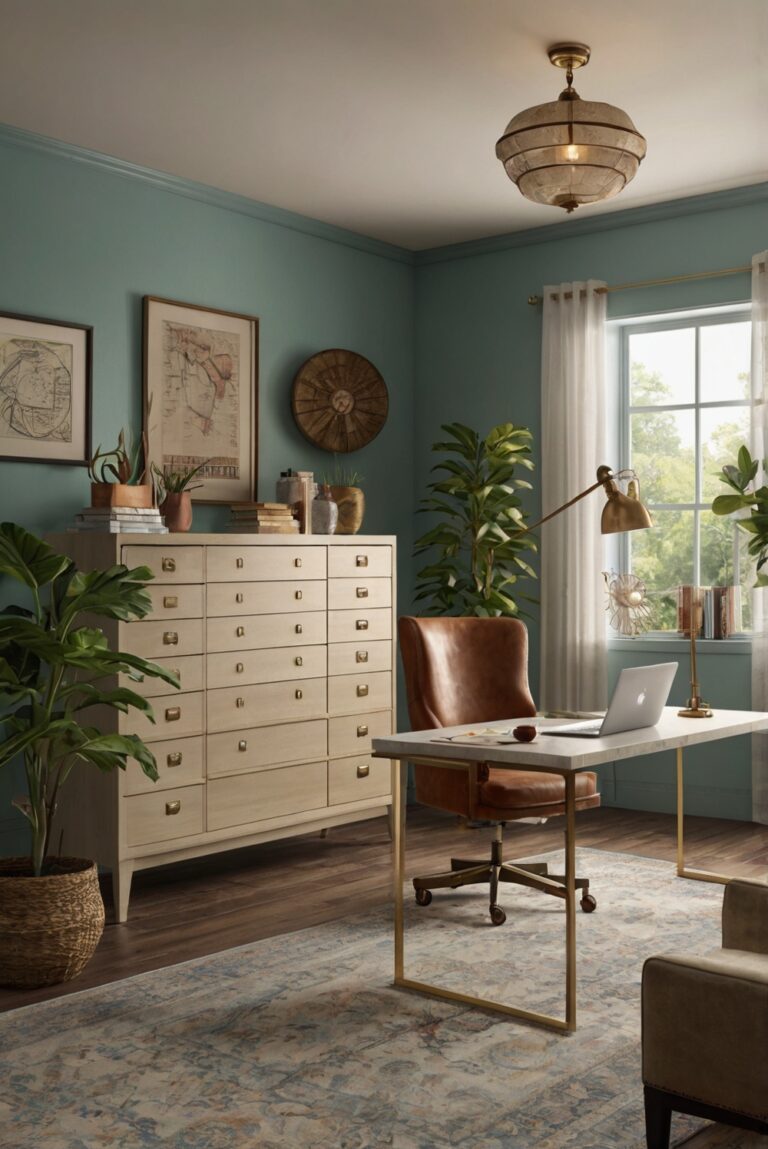Discover innovative ways to optimize tile layouts in home offices for maximum space efficiency. This daily routine for interior designers showcases creative solutions for small spaces.
Some space-saving ideas for tile layouts in home offices include using small or medium-sized tiles to create the illusion of a larger space, installing wall-mounted shelves and cabinets to free up floor space, and opting for light-colored tiles to reflect light and make the room appear brighter. Additionally, incorporating a built-in desk or a fold-down desk can maximize space efficiency. When considering tile layouts for home offices, it’s important to prioritize functionality while maintaining a visually appealing design. By carefully planning the layout and selecting the right tiles, you can create a stylish and practical workspace that enhances productivity and creativity.
1. Use small or medium-sized tiles for a spacious look.
2. Install wall-mounted shelves and cabinets to save floor space.
3. Opt for light-colored tiles to brighten up the room.
4. Consider a built-in or fold-down desk for space efficiency.
What Are Some Space-Saving Ideas for Tile Layouts in Home Offices?
When designing a home office, maximizing space is crucial to create a functional and productive workspace. Tile layouts can play a significant role in optimizing space utilization. Here are some space-saving ideas for tile layouts in home offices:
Utilize Vertical Space:
One effective way to save space in a home office is by utilizing vertical space. Consider installing floor-to-ceiling tiles or creating a tiled accent wall to draw the eye upwards and make the room appear larger. Vertical tiles can also create a sense of height, making the space feel more open and airy.
Choose Light-Colored Tiles:
Light-colored tiles can help brighten a home office and create the illusion of a larger space. Opt for neutral tones like white, beige, or light gray to reflect light and make the room feel more spacious. Light-colored tiles can also make the space feel more inviting and conducive to productivity.
Use Large Format Tiles:
Large format tiles are a great choice for small home offices as they can visually expand the space. By reducing the number of grout lines, large tiles create a seamless look that gives the impression of a larger room. Additionally, large tiles require fewer cuts during installation, saving time and reducing waste.
Consider Multi-Functional Tiles:
In a small home office, every inch of space counts. Consider using multi-functional tiles that serve dual purposes, such as cork tiles that double as a bulletin board or magnetic tiles for hanging notes and documents. These innovative tile options can help maximize functionality without sacrificing style.
Opt for Space-Saving Layout Patterns:
When planning the tile layout for a home office, opt for space-saving patterns like herringbone or diagonal layouts. These patterns can visually elongate the room and create a sense of movement that makes the space feel more dynamic. Additionally, diagonal layouts can trick the eye into perceiving a larger area than there actually is.
In conclusion, incorporating these space-saving ideas for tile layouts in home offices can help optimize the functionality and aesthetics of the workspace. By utilizing vertical space, choosing light-colored tiles, using large format tiles, considering multi-functional options, and opting for space-saving layout patterns, you can create a home office that is both stylish and efficient. Remember that every square inch counts in a small home office, so make the most of your tile design to maximize space utilization.
1. How can I maximize space in my home office using tile layouts?
Incorporating space-saving tile layouts in your home office can help create a more efficient and organized workspace. Consider using smaller tiles to create intricate patterns that visually expand the space. Opt for light-colored tiles to reflect more light and make the room feel larger. Additionally, using tiles that can be laid in a diagonal pattern can give the illusion of a bigger floor area. By strategically planning the tile layout, you can optimize the available space in your home office.
2. What are some tile layout designs that can save space in a home office?
When selecting tile layout designs for your home office, consider options like herringbone or chevron patterns, which can make the room appear more spacious. These designs create a sense of movement and depth, adding visual interest while maximizing the use of space. Another space-saving idea is to use large-format tiles, as fewer grout lines can make the room feel less cluttered. Mixing different tile sizes or shapes can also add texture and dimension to the space without compromising on functionality.
3. Are there specific tile materials that are ideal for space-saving layouts in home offices?
Choosing the right tile material is crucial when implementing space-saving layouts in home offices. Porcelain tiles are a popular choice due to their durability and versatility. They come in various sizes, colors, and patterns, allowing for creative tile arrangements that can optimize space. Additionally, porcelain tiles are easy to clean and maintain, making them a practical option for high-traffic areas like home offices. Other materials like ceramic or vinyl tiles can also be used to create space-saving layouts while enhancing the aesthetic appeal of the workspace.
4. How can I create a seamless look in my home office using tile layouts?
To achieve a seamless look in your home office, consider using large-format tiles with minimal grout lines. This will create a smooth and uniform surface that visually expands the space. Opting for tiles that complement the overall design theme of the room, such as wood-look or marble-look tiles, can also contribute to a cohesive and polished appearance. Additionally, using the same tile flooring throughout the office can create a sense of continuity and flow, making the space feel more integrated and spacious.
5. What are some practical tips for implementing space-saving tile layouts in home offices?
When planning space-saving tile layouts in your home office, start by measuring the room and determining the optimal tile size and layout pattern. Consider the furniture placement and traffic flow to ensure the tiles are strategically positioned to maximize space. Experiment with different tile arrangements on paper or with digital design tools before installation to visualize the final look. It’s also essential to choose high-quality tiles and hire professional installers to ensure a seamless and long-lasting finish. By following these practical tips, you can create a functional and visually appealing workspace in your home office.

